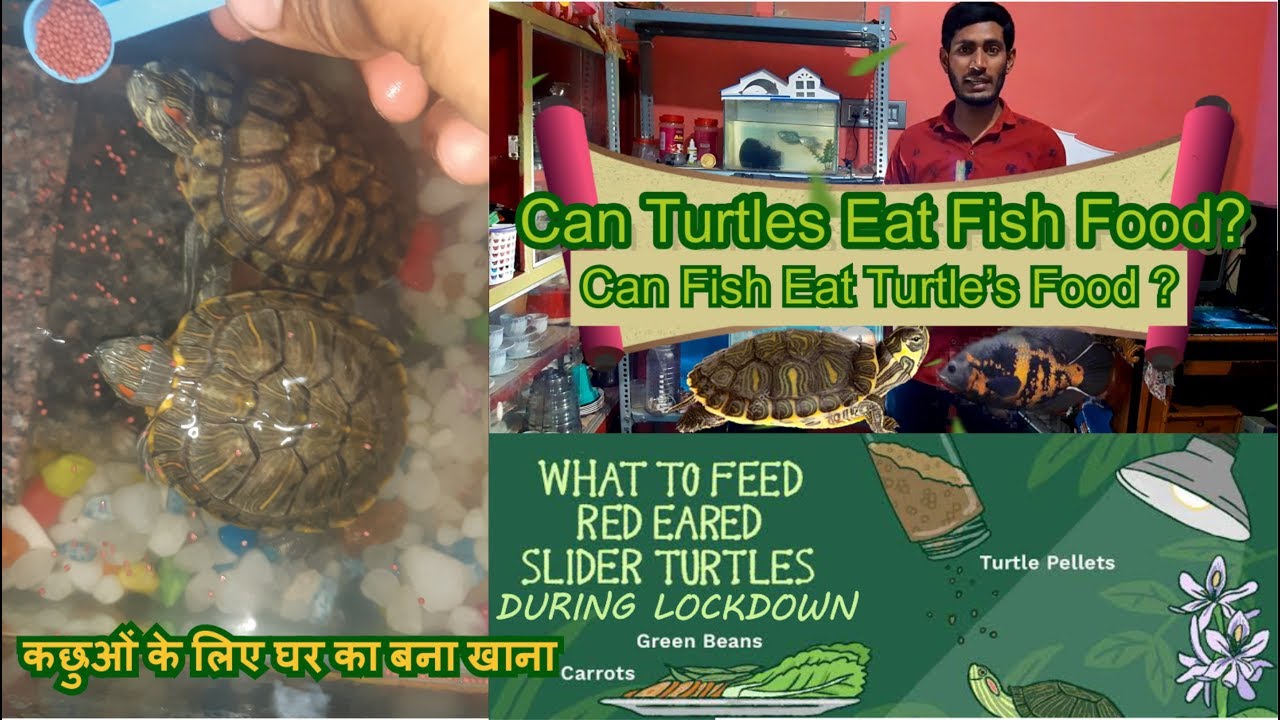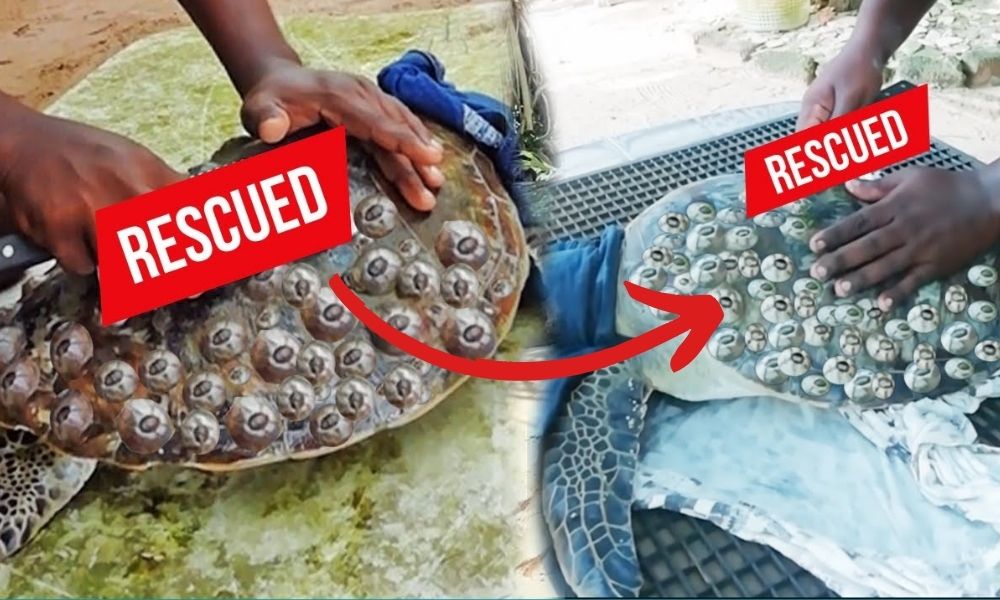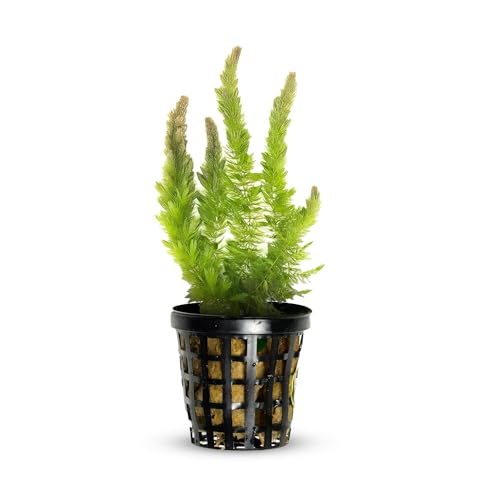Yes, turtles can eat fish food, but it should not be their primary diet due to varying nutritional needs. Turtles are omnivores, requiring a diverse diet of vegetables, insects, and commercial turtle food to thrive.
While fish food may be occasional treats, it lacks essential nutrients like calcium crucial for a turtle’s shell health. To ensure your turtle’s well-being, offer a balanced diet that includes leafy greens, fruits, and protein sources alongside commercial turtle pellets.
Moderation is key when supplementing with fish food to prevent nutrient imbalances or health issues. Consulting a veterinarian or reptile expert for dietary guidance is recommended for optimal turtle care and longevity.
Can Turtles Eat Fish Food?
Can turtles eat fish food? Yes, turtles can consume fish food, but it’s crucial to understand their dietary needs before incorporating it into their diet. Fish food composition typically includes protein, fats, and other nutrients that might benefit turtles.
However, potential harm may arise from the high protein content, which could lead to shell deformities and other health issues. It’s important to balance the nutritional requirements of turtles and ensure that the fish food doesn’t become their primary diet.
What Do Turtles Usually Eat?
Turtles need a diet rich in variety to meet their nutritional needs. Their natural diet includes plants, insects, and aquatic creatures. Turtles also require balanced nutrition to stay healthy and active.
Can Fish Food Be Harmful To Turtles?
When considering if a turtle can eat fish food, it’s important to understand the differences in their nutritional requirements. Turtles require a diet rich in vegetables, fruits, and protein, while fish typically need a diet high in protein and fish meal.
Consuming fish food can lead to potential health issues for turtles, such as nutritional deficiencies and digestive problems. Turtles and fish have different digestive systems, with turtles being omnivores and fish being carnivores. Therefore, it is essential to provide turtles with a proper diet tailored to their specific nutritional needs to ensure their health and well-being.
Can Turtles Eat Certain Types Of Fish Food?
Turtles can eat fish food, but it’s crucial to evaluate the ingredients and additives in the food. Certain types of fish food may contain harmful preservatives and artificial colors, which can be detrimental to a turtle’s health.
It’s essential to identify safe options for turtles, such as natural, unprocessed fish food with high protein content. When feeding fish food to turtles, consider the frequency and quantity, ensuring it complements their regular diet. By being mindful of the quality and nutritional value of the fish food, you can provide a balanced and nourishing diet for your turtles.
Alternative Food Options For Turtles
Many turtle owners wonder if their pets can eat fish food. Turtles have different dietary needs compared to fish. While some commercial fish food may contain ingredients that are suitable for turtles, it is important to choose turtle-specific commercial food that provides the right balance of nutrients.
Turtles can also be fed homemade food options, such as leafy greens, vegetables, and fruits. This ensures they receive a varied diet that includes essential vitamins and minerals. It is crucial to research and prepare homemade meals carefully, consulting with a veterinarian or a reptile nutritionist to ensure the food provided meets the specific dietary requirements of the turtle.
Proper nutrition is essential for the health and well-being of turtles. Feeding them a balanced diet that includes both commercial and homemade options helps to prevent nutrient deficiencies and ensures their overall growth and development. Remember to avoid offering them food that is toxic or harmful to their health.

Credit: www.youtube.com
How To Transition A Turtle’s Diet?
Transitioning a turtle’s diet is essential for its overall health and well-being. Gradual transition is important to avoid any digestive issues and to ensure the turtle adapts well to the new food. Introducing new foods to your turtle should be done slowly, starting with small amounts and gradually increasing. Observe your turtle’s behavior and health during this transition period, looking for any signs of distress or discomfort.
It is important to monitor their appetite, digestion, and waste output. If your turtle shows resistance or any negative reactions to the new food, it may be necessary to revert back to their previous diet and consult with a veterinarian for further guidance. Providing a varied diet that includes a combination of fish food, vegetables, and other appropriate reptile food will help ensure that your turtle gets the necessary nutrients for its growth and well-being.
Providing A Balanced Diet For Turtles
Turtles can eat fish food, but it’s essential to provide a balanced diet to ensure their nutritional needs are met. Including a variety of food sources such as pellets, vegetables, and live prey can help offer essential nutrients and maintain their health. Consulting a veterinarian for guidelines is crucial to ensure that the turtle’s diet is well-rounded and meets their specific dietary requirements.
Credit: www.quora.com
Conclusion
Turtles can eat fish food but it should not be their primary diet. It’s essential to provide a balanced diet with leafy greens and other vegetables. Remember to consult with a veterinarian for the best feeding practices for your pet turtle.
Providing a nutritious diet will ensure your turtle’s health and well-being.





Leave a Reply